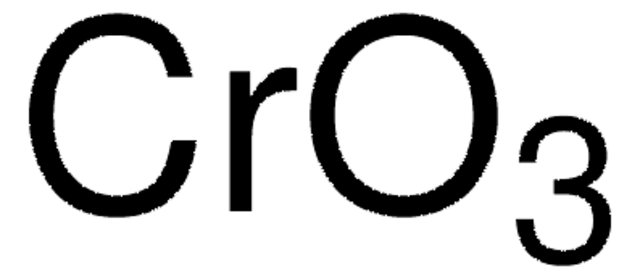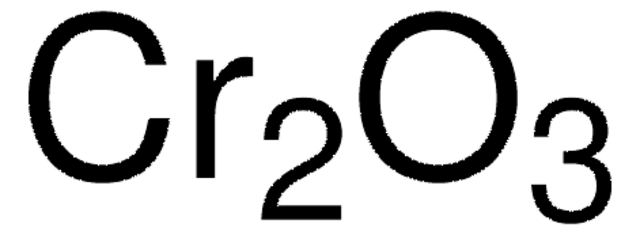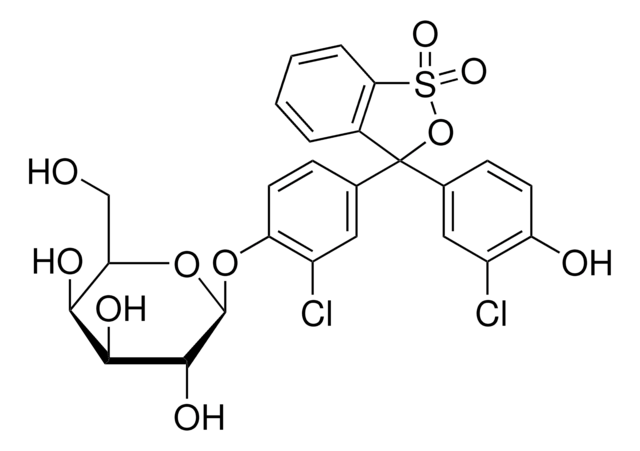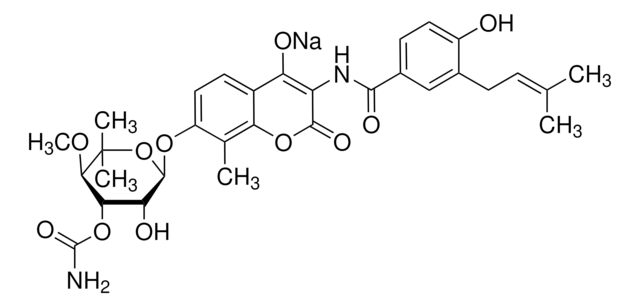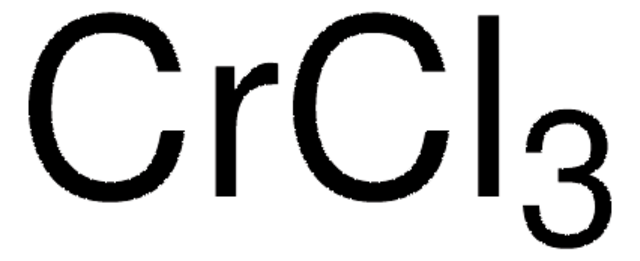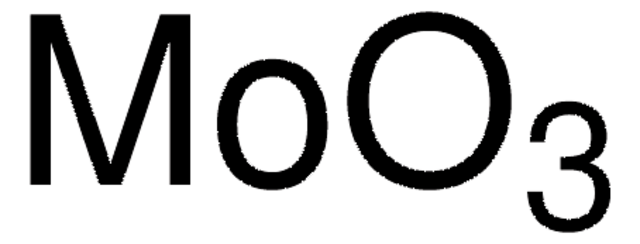232653
Chrom(VI)-oxid
ReagentPlus®, 99.9% trace metals basis
Synonym(e):
Chromsäureanhydrid
About This Item
Empfohlene Produkte
Qualitätsniveau
Produktlinie
ReagentPlus®
Assay
99.9% trace metals basis
Form
(powder and or flakes)
pH-Wert
<1 (20 °C, 100 g/L)
mp (Schmelzpunkt)
196 °C (dec.) (lit.)
SMILES String
O=[Cr](=O)=O
InChI
1S/Cr.3O
InChIKey
WGLPBDUCMAPZCE-UHFFFAOYSA-N
Suchen Sie nach ähnlichen Produkten? Aufrufen Leitfaden zum Produktvergleich
Verwandte Kategorien
Allgemeine Beschreibung
Anwendung
- Transformation of various primary alcohols to carboxylic acids.
- Oxidation of arenes (naphthalenes and anthrathene) to the corresponding quinones by using periodic acid as the terminal oxidant in acetonitrile.
- Benzylic oxidation of various substituted toluene to the corresponding benzoic acids.
- Oxidation of sulfides to sulfones.
Rechtliche Hinweise
Signalwort
Danger
Gefahreneinstufungen
Acute Tox. 2 Inhalation - Acute Tox. 3 Dermal - Acute Tox. 3 Oral - Aquatic Acute 1 - Aquatic Chronic 1 - Carc. 1A - Eye Dam. 1 - Muta. 1B - Ox. Sol. 1 - Repr. 2 - Resp. Sens. 1 - Skin Corr. 1A - Skin Sens. 1 - STOT RE 1 Inhalation - STOT SE 3
Zielorgane
Respiratory system
Lagerklassenschlüssel
5.1A - Strongly oxidizing hazardous materials
WGK
WGK 3
Flammpunkt (°F)
Not applicable
Flammpunkt (°C)
Not applicable
Zulassungslistungen
Zulassungslistungen werden hauptsächlich für chemische Produkte erstellt. Für nicht-chemische Produkte können hier nur begrenzte Angaben gemacht werden. Kein Eintrag bedeutet, dass keine der Komponenten gelistet ist. Es liegt in der Verantwortung des Benutzers, die sichere und legale Verwendung des Produkts zu gewährleisten.
EU REACH SVHC Candidate List
EU REACH Annex XVII (Restriction List)
EU REACH Annex XIV (Authorisation List)
Analysenzertifikate (COA)
Suchen Sie nach Analysenzertifikate (COA), indem Sie die Lot-/Chargennummer des Produkts eingeben. Lot- und Chargennummern sind auf dem Produktetikett hinter den Wörtern ‘Lot’ oder ‘Batch’ (Lot oder Charge) zu finden.
Besitzen Sie dieses Produkt bereits?
In der Dokumentenbibliothek finden Sie die Dokumentation zu den Produkten, die Sie kürzlich erworben haben.
Kunden haben sich ebenfalls angesehen
Unser Team von Wissenschaftlern verfügt über Erfahrung in allen Forschungsbereichen einschließlich Life Science, Materialwissenschaften, chemischer Synthese, Chromatographie, Analytik und vielen mehr..
Setzen Sie sich mit dem technischen Dienst in Verbindung.